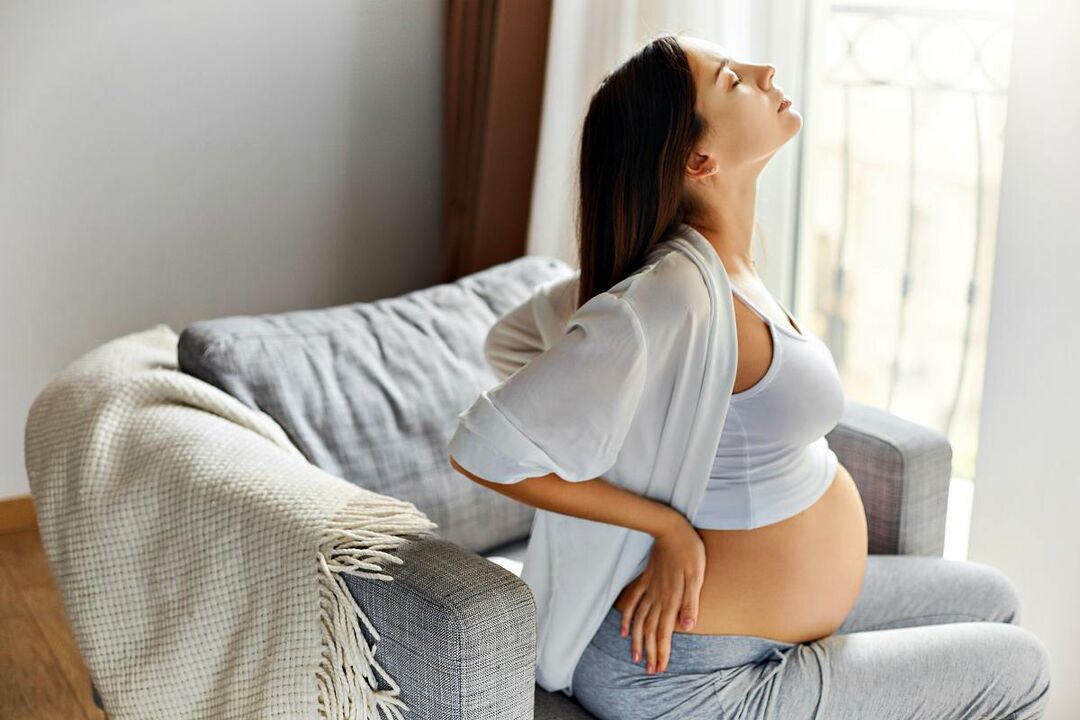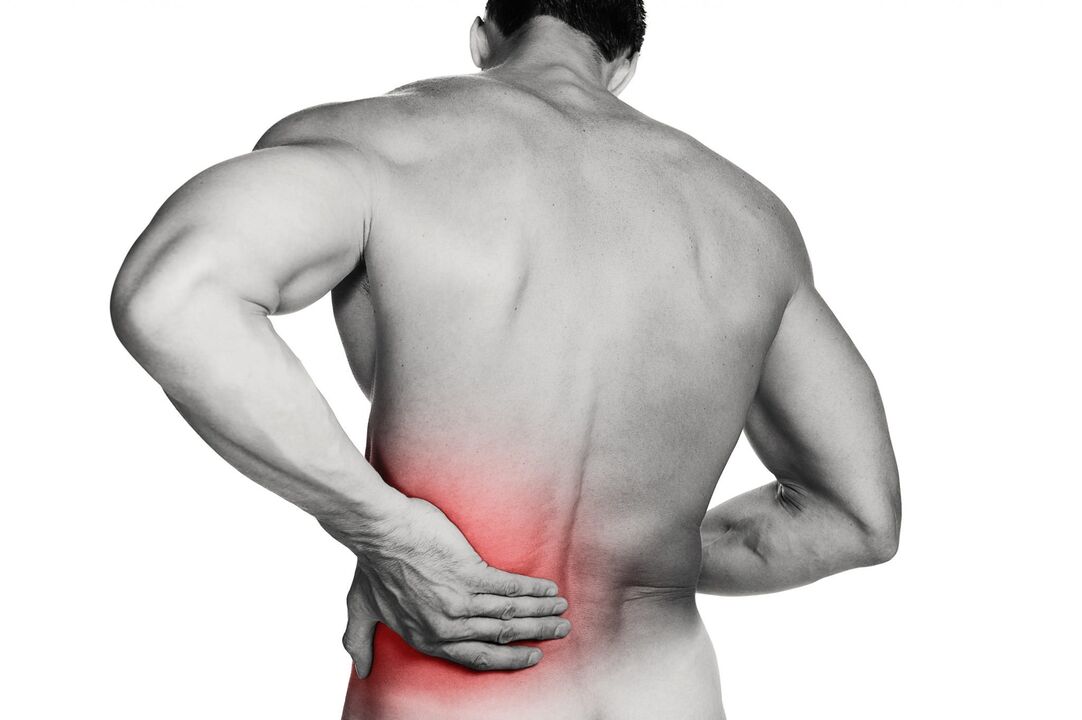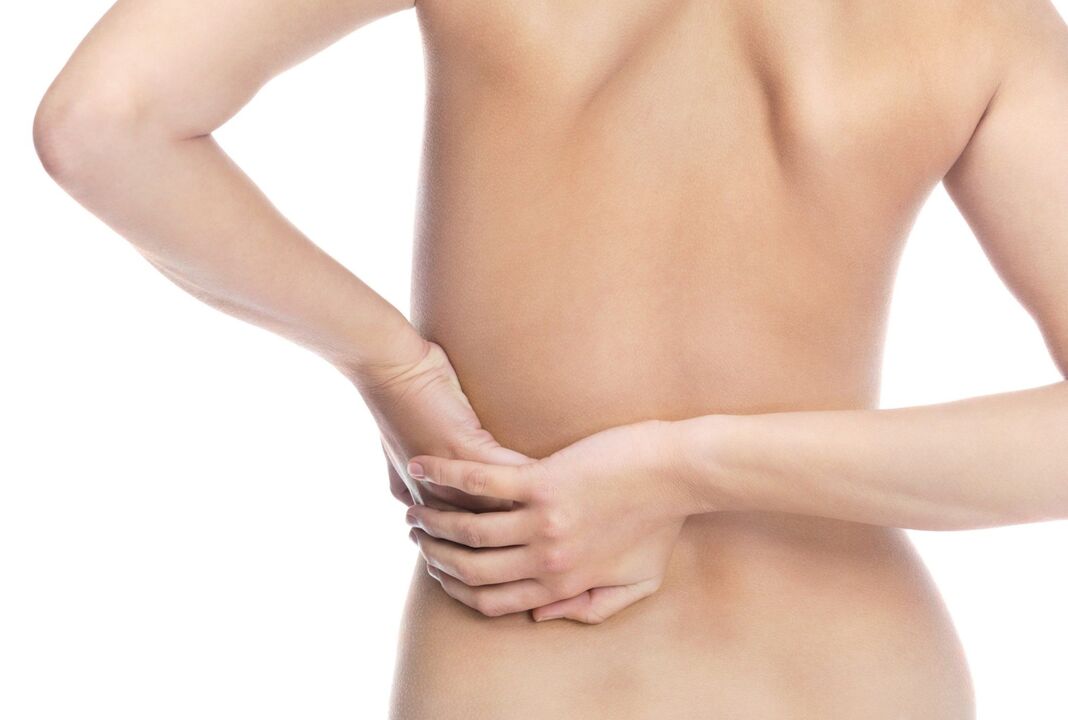A common occurrence among people of different ages and professional affiliations when the back hurts in the lower back. Hypotension in contrast to excessive loads in the gym, drafts, poor posture - all this gives rise to unpleasant and painful sensations in the lower back.

When is a pain reliever enough to solve the problem and at what point do you need urgent medical intervention. You need to remember the following: if your lower back hurts constantly, then this is a serious reason to consult a specialist.
Why does the lower back hurt
The causes of low back pain may be similar in men and women, or have their own specificities associated with both anatomical characteristics and professional activities and lifestyle.
- A stiff lower back in the morning after sleep can be the result of a poor quality bed and indicate spinal problems.
- If the lower back hurts a lot, it is possible to injure the nerve endings, develop a herniated disc, osteochondrosis.
- When you stand for a long time, a static load acts on your lower back. The lumbar muscles enter a state of hypertonicity and can interrupt the innervation of the nerve endings.
- When you sit down, your lower back hurts due to poor posture. Many sitting at the table occupy an uncomfortable position of the body, which also leads to overloading the muscle corset and violating the nerve endings.
- When the lower back hurts and pulls on the legs, symptoms may indicate a violation of nerve endings in the pelvic region. Often the violation occurs in the coccyx region, when it hurts below the waist, then the pain is reflected in the lower extremities.
- If the back hurts above the waist, then most likely the problem lies in the violation of nerve fibers in the lower back, or the problem comes from Organs internal organs.
- The situation when the lower back hurts on the side, the sensation is like pulling, and the temperature rises, so here we are talking about progressive inflammation in Organs internal organs.
To identify the cause of pain in the lower back, you must undergo a thorough medical examination and take tests that will show you if there are inflammatory processes, violation of nerve endings or if there is a hernia. Only after the diagnosis has been clarified can measures be taken to eliminate the disease.
Low back pain in women
The fairer sex is especially prone to lower back pain. The reasons why modern women have back pain in the lower back can be associated both with professional activities and the presence of diseases.
Pain after running can develop due to incorrectly selected shoes without a high-quality shock absorber, when heel strikes on the ground without softening are transmitted to the lower back. The lower back hurts after walking in very high heels, which not only upsets balance, but also causes a woman to heavily arch her spine, putting additional stress on her lower back.
Pain when walking may not be the result of lower back disease, but problems with the hip joints, which are subjected to excessive friction during exercise. Anxiety at night can cause an uncomfortable mattress for a girl in bed.
If the pain is felt on the right or left, closer to the periphery, this indicates a greater likelihood of disease of Organs internal organs. A worrisome tailbone can be a symptom of an injury or strangulation.
Whatever the cause, only a qualified specialist will prescribe the appropriate treatment.
Back pain before period
The reasons why women and girls may experience lower back pain or pull on the lower abdomen before menstruation starts have a very extensive etiology. This can be a consequence of changes in the hormonal background and symptoms of a whole host of diseases.
- Neoplasms;
- Infections and the consequence of hypothermia;
- Incorrect installation of the intrauterine device;
- Abnormalities in the location of the uterus or ectopic pregnancy;
- Cysts, fibroids, endometriosis.
Given the length of the list, a woman with disturbing symptoms should see a doctor and establish the cause of the regular malaise.
Why does the lower back hurt during menstruation?
Pain in the lower back during menstruation is often considered the norm, because there is a serious hormonal increase, a large amount of blood flows to the pelvic organs, and, increasing, they can put pressure on the nerve endings. The pain disappears as soon as the main exit occurs.
However, some women continue to feel unwell after menstruation. If such a manifestation is atypical, then it is worth considering this as a sign of a possible pathology.
Can the lumbar region hurt in the absence of visible causes in the form of infections, diseases and the development of pathological processes? Perhaps if the anatomical structure of the uterus is such that it deflects backwards. In this position, swelling during menstruation will put pressure on adjacent organs and nerve endings, which will cause pain in the lower back. A prolapse of the uterus caused by regular weight lifting can also trigger a similar symptom.
If a woman has pain in her stomach and lower back, it is highly recommended to visit a gynecologist to identify the cause of such a disease. Symptoms may indicate the development of polycystic disease, inflammation of the appendages, endometriosis, infectious and sexually transmitted diseases. The cause can be a poorly installed intrauterine device or the opposite case - the development of an ectopic pregnancy.
Back pain during pregnancy
A common complaint of women during pregnancy is an indication of back pain. There may be a few reasons why pregnant women experience back pain, as the body is undergoing a major restructuring, weight gain and imbalance due to an enlarged belly.

In the early stages of pregnancy, the discomfort of pulling can start from the moment the fertilized egg builds up in the walls of the uterus. After childbirth, pregnant women are prone to diseases of the urogenital area - cystitis and pyelonephritis, which can also be reflected in pain in this area.
Why a pregnant woman can start to feel great discomfort in the second trimester. This is due to the active growth of the fetus and the increase in the volume of the abdomen of the expectant mother - the internal organs begin to tighten, including the nerve endings that pass in the pelvic region. A woman may experience radiating pain in the buttocks or legs.
A woman may feel like her lower abdomen is pulled, in the later stages, when the baby's head starts to drop, the pain flows down the lower back to the sacrum. At 21 to 40 weeks pregnant, a woman may experience lower back pain due to an increase in the level of relaxin. This provokes the development of symphysiopathy - an inflammatory process in the pubic joint.
Lower back hurts and gives way in the leg
A frequent occurrence in people over 35 years of age is complaints of pain in the lower back with return to the leg or gluteal muscle. What can be associated with such pathology? For some people the pain radiates to the right leg, for others the pain radiates to the left leg even though the lower back feels the same. Here the point may be that different nerve roots are pinched, because there are outlets on both the right and left sides of the vertebra.
The pain will hit the buttock and leg with osteochondrosis, scoliosis, herniated discs and a whole list of other diseases associated with damage to spinal cord neurons.
When pinched, the lower back hurts a lot. A clumsy movement can lead to such a serious consequence that the pain syndrome will have to be removed with an injection. As inflammation develops immediately due to the injury, additional pressure is exerted on the nerve ending.
The problem will be resolved after a course of steroidal anti-inflammatory drugs and decongestants, which will allow the patient to relax and relieve muscle tension in the affected area.
Also common causes of such irradiation can be neuralgia and more serious pathologies associated with neoplasms in the lumbar region, which will exert pressure or cause inflammation.
Why the lower back hurts in men
The treatment of lower back pain in men is often associated with neglected cases, because the representative of the stronger sex prefers to hang on "until the spear in the back does not interfere with sleep". It is when pain becomes the cause of chronic lack of sleep, man decides to go to the doctor.

Low back pain in the case of a representative of the stronger sex can be associated with:
- With high physical activity - professional, sports;
- Back problems due to physical inactivity, prolonged driving.
- Internal organ problems - kidneys or prostate.
Treatment of the lower back at home for acute painful attacks will be ineffective, especially if folk remedies are used. Given that men tend to trigger the disease, sometimes the pain has to be blocked with the help of injections of potent drugs - painkillers and anti-inflammatories.
Back pain after sleeping
Have you ever had lower back pain in the morning? This reaction of the body is quite understandable if the day before you overdo it with training or, after starting a general cleaning, you vigorously move the furniture. If it is an injury, you should definitely visit a doctor to make sure there are no serious consequences.
What if there were no injuries and you do not abuse sports, but after sleeping you feel pain in your lower back. One of the causes of morning pain is the development of osteochondrosis. With the pathology developing, the bones and parts of the spine become much more sensitive to the static position of the body at night. What will pass without consequences in a healthy person, for a patient with osteochondrosis, will cause a lot of sharp painful sensations when waking up.
Also, pain can be caused by an excessively curved spine in the supine position. This is due to the habit of sleeping, lying on your back, stretching your legs. The lower back receives an excessive load and in the morning you can find your muscles very overloaded.
If morning pain is chronic, you should be examined by a doctor, as this state of affairs could be a signal from the body about disorders or a reaction to stress, illness, or being overweight. It is very important to find out why.
How to understand if the kidneys or lower back hurts
Pain in the lower back can be caused both by problems with the spine and internal organs.

How to understand where the signal comes from? To determine what hurts - the kidneys or the lower back - you need to look at the location. The spine, pinched nerve endings and spasming muscles are painfully felt closer to the mid-back, the axis of the spine. And if the kidneys hurt, give the lower back closer to the periphery, to the side.
At the same time, back pain can vary: it can be stronger in the morning, when you wake up, and in the late afternoon, at the end of the day. Internal organ pain is more permanent and may be accompanied by signs of inflammation - fever, vomiting.
In a simple way, we determine - the lower back or the kidneys. If the pain is weaker with physical inactivity and disappears after rubbing with ointment, then it is the back. Internal organ pain will not give a debilitating reaction to the local application of heating ointments and will not allow you to relax no matter what position you take.
The child has back pain
Low back pain in children is often caused by poor posture or a poor quality workplace. The onset of pain has no clear relationship with age: it can harm both a preschooler and a teenager. Why the lower back hurts in childhood, a vertebrologist can tell after a detailed examination.
- Muscle strain due to a heavy backpack or constant sitting at a desk or computer - up to 80% of cases.
- The development of scoliosis requires rapid intervention as the child's spine can be deformed very quickly.
- Lesions or bruises.
- Internal organ diseases - 20% of applications.
If a child has a fever and lower back pain, this could be a symptom of an extremely unpleasant disease of osteomyelitis. The pathological process of a purulent-necrotic nature affects the bone marrow and bones.
Which doctor to contact
When the lower back hurts and the need to visit a doctor is brewing, the patient wonders which doctor can help. Everything here will depend on the reasons that caused the pain.
To get started, it is recommended to visit a local therapist or general practitioner. To establish the source of the problem, you will need an exam, x-ray of the spine, ultrasound of the pelvis, general blood and urine tests.
After the exam, the therapist recommends which specialist you need to contact to continue cause-focused treatment. How such an expert can be recommended:
- Neurologist - to examine the spine, back muscles and nerves.
- Urologist - if there are problems in the urogenital area.
- A gynecologist is a female specialist who will help identify the cause of pain in the female reproductive system.
Timely contact with a specialist will help to eliminate the cause of low back pain at the initial stage. Advanced cases can lead to serious consequences, which may result in the inclusion of surgical intervention.
Back pain exercises
When eliminating an attack of acute pain, the doctor after drug therapy in most cases prescribes exercise therapy, that is, exercises. Effective exercises help to relieve tension from the muscular corset, strengthen it, eliminate spasms within the fibers, which can cause pain.
The rehabilitation system prescribes doing all exercises slowly, without sharp turns and lunges. If you do not follow this rule, you may suffer additional injuries.
Stretching exercises are recommended to relieve pain. For muscle fibers, this load allows to get rid of hypertonicity, the clamps are removed. An exercise focused on a problem muscle group or spine. Improves blood circulation in the problem area, improves microcirculation in muscle and cartilaginous cells, contributing to increased nutrition and removal of caries products.
The required set of exercises is selected by the attending physician or a physical therapist who will lead the exercise therapy classes. Afterwards, the patient's task is to independently maintain and consolidate the result by doing exercises at home.
How to stain the lower back with pain
When the lower back starts to hurt, the first thought that comes to mind is how to spot how to treat. You can't take the first creams and ointments that appear with the inscription "painkiller". It is important to understand what caused the pain and only then apply the appropriate medication.
- If pain is associated with osteochondrosis, pinched nerve endings, inflammation of nerve roots, NSAIDs and corticosteroids may be needed.
- In case of hypothermia, to activate blood microcirculation in the muscles, heating ointments with an irritating effect are suitable.
- There are also homeopathic preparations and balms.
It should be remembered that ointments will not help if the cause of pain is in Organs internal organs. If the pain is caused by diseases of the kidneys, organs of the female or male genitourinary system, anesthetic ointments can lubricate the clinical picture, and heated ones can provoke an intensive development of inflammation.
That is why it is also necessary to use folk remedies only after consulting a doctor, so as not to aggravate your own condition with unjustified treatment.



















